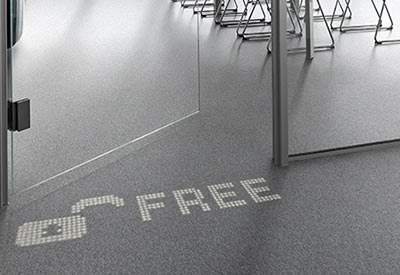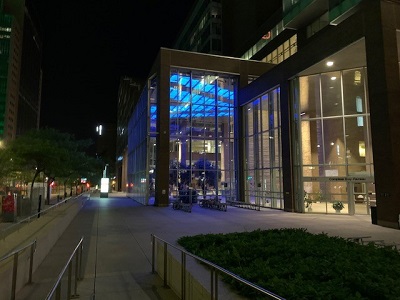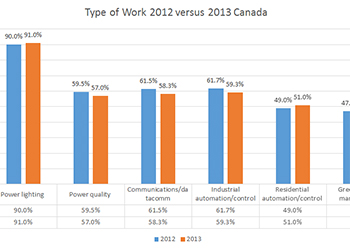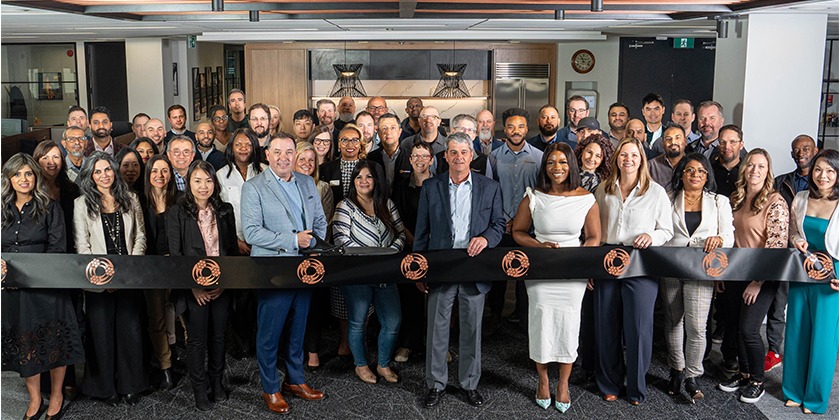Branchez-vous – c’est l’avenir de l’éclairage

Dans cet article vous verrez les plus récents développements qui touchent les systèmes d’éclairage, plus particulièrement les systèmes branchés. L’éclairage lié à l’Internet permet d’intégrer la lumière dans nos vies de façon nouvelle. L’avenir est limité par notre imagination. L’âge numérique dans l’éclairage et la magie de l’Internet combines ensemble a ouvert un tout nouveau monde de possibilités. Les DEL ont créé des zones de commandes qui vont bien au-delà des gradateurs, le changement de couleurs ou l’utilisation de celles-ci. L’éclairage permet maintenant de changer la façon dont les gens voient leur environnement et peut même être un outil de communication pour une communauté.
Lire l’article …
Having lighting as part of the “Internet of Things” is allowing light to be integrated into our lives in totally new ways, says Mike Simpson, Technical and Design Director, Philips UK and Ireland. According to Simpson, the future is limited only by our imaginations.
The digital age of lighting and the magic of the Internet have combined to create a whole new world of possibilities. LEDs have created an era of controllability that goes much further than just dimming, changing colour temperatures or the use of colour. Lighting can now alter how people view their surroundings in completely new ways and in some situations even act as a communication tool.
With greater connectivity, programmability and accessibility, we’re entering an exciting time – where people are using light to connect with each other and share experiences. With Cisco predicting that some 25 billion devices will be connected by 2015, and 50 billion by 2020, the future holds a new level of interactivity that will become a natural part of our everyday lives.
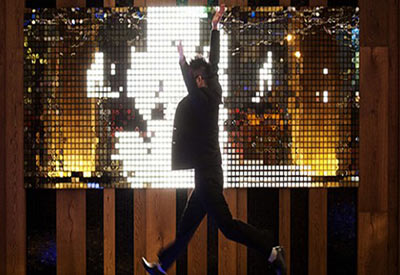 Photo: In the lobby of a W Hotel In Taipei, an array of interactive OLEDs reflects the shapes and movements of passers-by.
Photo: In the lobby of a W Hotel In Taipei, an array of interactive OLEDs reflects the shapes and movements of passers-by.
Transformative
At home, it is now possible to easily personalize your lighting via an iPhone or other smart device with systems such as hue. The humble lightbulb, once a commodity, has been transformed. New lighting innovations are reinventing how people can interact with light through apps, using the extra functionality of LEDs to create flexibility that just wasn’t possible with older technology.
Through sites such as IF THIS THEN THAT (a service that enables users to connect different web applications [e.g., Facebook, Evernote, Weather, Dropbox, etc.] together through simple conditional statements known as “Recipes”), these interactive capabilities are really being explored, enabling lighting to move far beyond its functional roots.
IF THIS THEN THAT makes it possible for your lighting to change colour or flash in response to a particular digital trigger. Do you need a weather update before you leave the house? Then let your lighting tell you when it’s raining outside.
New era of connectivity
A new level of connectivity is also beginning to emerge in the commercial arena. Philips unveiled a revolutionary new connected lighting system for offices at this year’s Light and Building. Merged with the IT network, the solution is capable of supplying location-based data such as how the area is being used and the temperature. Employees are even able to use smart phones to control the lighting in a meeting room themselves.
The new era of connectivity is arguably magnifying existing trends. Already light is being used to great effect to bring people together around shared, interactive experiences.
Light and sound have been used in this manner by Cinimod Studio in the creation of the innovative interactive lighting control system for Peru National Stadium in Lima. Tapping into the collective mood of the crowd, lighting is used to establish a visual connection between the fans, their passion, and the game. The stadium is able to communicate the ebb and flow of excitement and disappointment to the surrounding city, becoming a watched spectacle in itself.
The system gathers the crowd’s noise levels in real-time and translates the audible signal into a visual map that is depicted on the façade’s lighting display. The patterns vary in colour, speed, brightness and scale — at times the façade can be seen to reflect the excitement and celebration, other times it recoils into a subdued and disappointed state. In these variations the mood of the crowd is clearly visualised for the outside city to see and share.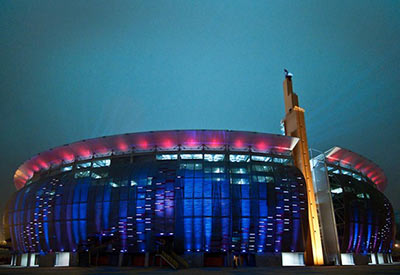
Responding to proximity
But sound is just one trigger. Increasingly light is being used to respond to a person’s proximity or touch. For example, in the lobby of a W hotel In Taipei they have used an array of interactive OLEDs to reflect the shapes and movements of passers-by. The wall installation incorporates thousands of OLEDs, which interact with guests by changing shape. Such solutions help create an intuitive, and highly personalised link between people and world around them.
Today’s lighting solutions are responding to people in new and unique ways to change how people interact with and experience their surroundings both on a personal level and at scale.
Lighting is also creating news way of communication. Philips has partnered with Desso to develop a new solution that puts LED lighting in the floor you walk on, via a light transmissive carpet. It brings information, direction, inspiration and safety via the carpet you walk on adding an exciting dimension to interior design and space planning. It can guide people around buildings, including safety exits and routes, making information visible only when needed.
And finally…
Technological developments, design possibilities and the ability to connect billions of things are allowing light to be integrated into our lives in totally new ways and the future is limited only by our imagination.
Adapted from an article that first appeared on Voltimum, a leading internet portal for the electrical industry that operates in 13 countries across the globe in 7 languages.
